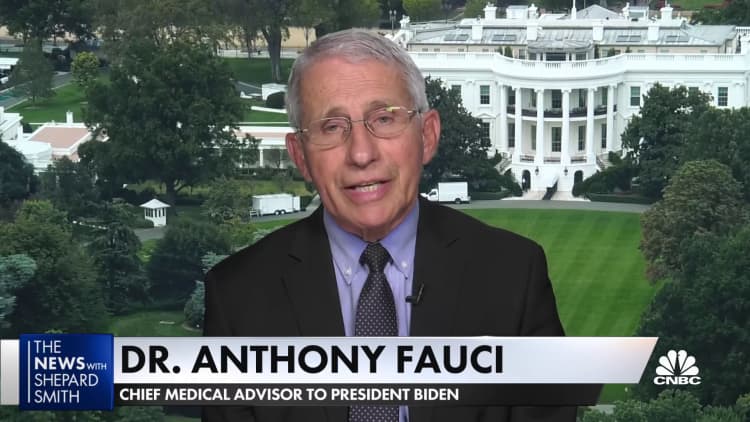The CDC's new mask guidelines could actually increase the risk of spreading Covid-19 in public spaces and workplaces, scientists of a leading infectious disease group said Thursday.
The Centers for Disease Control and Prevention abruptly reversed its mask guidance for vaccinated Americans last week to say that vaccinated people no longer need to wear a mask indoors or outdoors in most settings. Officials said they changed their guidance, in part, because research shows the vaccines provide a very high level of protection against getting sick from Covid-19 and spreading it to others.
"There is no debate about this fact," Dr. Jeffrey Duchin, who sits on the CDC's Advisory Committee on Immunization Practices, said at a press briefing hosted by the Infectious Diseases Society of America on Thursday. The agency's announcement, however, led to widespread confusion and frustration because "it was unexpected and lacked needed context for implementation by state and local public health community," he said.

Duchin is the society's liaison to the CDC's immunization committee. The society represents leading infectious disease specialists in the U.S.
"There was no information on how to apply the guidance in practice, particularly related to the inability to verify vaccination status," Duchin said. The CDC also didn't provide any guidance on whether people should continue wearing masks in areas of high transmission or low vaccination rates, he said. "What the CDC did though was sub-optimal and allowed for misimpression that the mask mandates have been lifted."
Physicians across the country and federal health officials continue to emphasize that only vaccinated people are safe to remove their masks. The new mask guidance has been misinterpreted as an end to the pandemic and mask mandates, putting local health officials in a very tough position. States across the U.S. took the news as a cue to ease mask mandates. Texas Gov. Greg Abbott used the new guidance to justify signing an executive order that threatens to fine local officials and municipalities that don't drop mask requirements.
Duchin said both vaccinated and unvaccinated people are probably safe outdoors without masks, but that's not the case inside.
"Now the risk of Covid-19 spread is increased in crowded indoor spaces with unvaccinated people and especially with poor ventilation," Duchin said. While the CDC's scientific basis for the change "is solid," Duchin said ending the indoor mask mandate "could lead to increased risk in public spaces and workplaces with preventable Covid-19 spread primarily among the unvaccinated."
Vaccination rates vary across the country, and the majority of those vaccinated are older adults. Large subgroups, such as younger adults, remain unvaccinated.
Dr. Jeanne Marrazzo, who also spoke at the briefing, said research has shown that up to 3% of Americans were told by their physicians that they have some level of immunodeficiency, which places them at an increased risk of exposure to Covid.
"Millions of people fit this bill, and we have literally very little data on whether the vaccine works in them," Marrazzo said. "It's a real reason to be cautious and interpret the guidelines carefully."
The scientists also said that people need to acknowledge that there is uncertainty about the future course of the pandemic, the impact of emerging variants, how long immunity lasts and the potential for resurgence of Covid-19.
"The Covid-19 outbreak is not by any means over, there's still significant uncertainty and there's still significant disease activity," Duchin said.
If someone is fully vaccinated and has no other conditions that compromise their community, and if the rates of Covid are relatively low where they live and the vaccination coverage is high, Marrazzo said, it "would be 100% fine pretty much going anywhere without a mask."
Marrazzo added that because vaccination rates are not even at 50% in her community, she will continue to wear a mask indoors, despite being fully vaccinated.
"If I knew that we were seeing really remarkable declines in hospitalization and symptomatic illness that was related possibly to Covid, and had a very high immunization rate, then I would probably be fine going without a mask, but I don't see that happening anytime real soon," she said.
While almost half of all people in the U.S., 160.2 million, have received at least one shot, Marrazzo said only 4.6% of the world's population has done the same.
"People need to pay attention about what's going on and pay attention to vaccination rates, pay attention to the involvement of these new variants and think about being prepared to sort of ramp things back up again," Marrazzo warned.
Correction: This story has been updated to reflect that the press briefing was hosted by the Infectious Diseases Society of America.


